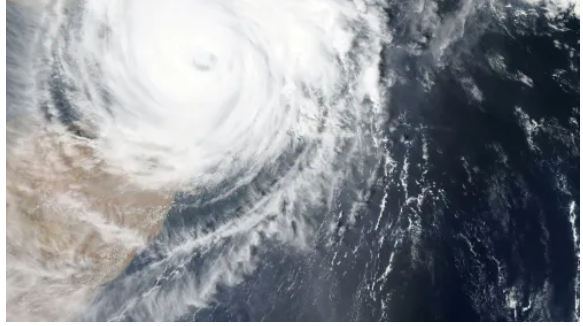Here’s a sobering report from Freethink.com about how changes in the Loop Current can make this year’s hurricane season even worse than expected:
The Atlantic hurricane season started on June 1, and the Gulf of Mexico is already warmer than average. Even more worrying is a current of warm tropical water that is looping unusually far into the Gulf for this time of year, with the power to turn tropical storms into monster hurricanes.
It’s called the Loop Current, and it’s the 800-pound gorilla of Gulf hurricane risks.
When the Loop Current reaches this far north this early in the hurricane season – especially during what’s forecast to be a busy season – it can spell disaster for folks along the Northern Gulf Coast, from Texas to Florida.
If you look at temperature maps of the Gulf of Mexico, you can easily spot the Loop Current. It curls up through the Yucatan Channel between Mexico and Cuba, into the Gulf of Mexico, and then swings back out through the Florida Strait south of Florida as the Florida Current, where it becomes the main contributor to the Gulf Stream.
When a tropical storm passes over the Loop Current or one of its giant eddies – large rotating pools of warm water that spin off from the current – the storm can explode in strength as it draws energy from the warm water.
This year, the Loop Current looks remarkably similar to the way it did in 2005, the year Hurricane Katrina crossed the Loop Current before devastating New Orleans. Of the 27 named storms that year, seven became major hurricanes. Wilma and Rita also crossed the Loop Current that year and became two of the most intense Atlantic hurricanes on record.
I have been monitoring ocean heat content for more than 30 years as a marine scientist. The conditions I see in the Gulf in May 2022 are cause for concern. The National Oceanic and Atmospheric Administration is forecasting an above-average Atlantic hurricane season, with 14-21 named storms, six to 10 of them hurricanes. The Loop Current has the potential to supercharge some of those storms.
Warm ocean water doesn’t necessarily mean more tropical storms. But once tropical storms reach waters that are around 78 F (26 C) or warmer, they can strengthen into hurricanes.
Hurricanes draw most of their strength from the top 100 feet (30 meters) of the ocean. Normally, these upper ocean waters mix, allowing warm spots to cool quickly. But the Loop Current’s subtropical water is deeper and warmer, and also saltier, than Gulf common water. These effects inhibit ocean mixing and sea surface cooling, allowing the warm current and its eddies to retain heat to great depths. Read more:
https://www.freethink.com/environment/2022-hurricane-season-loop-current




